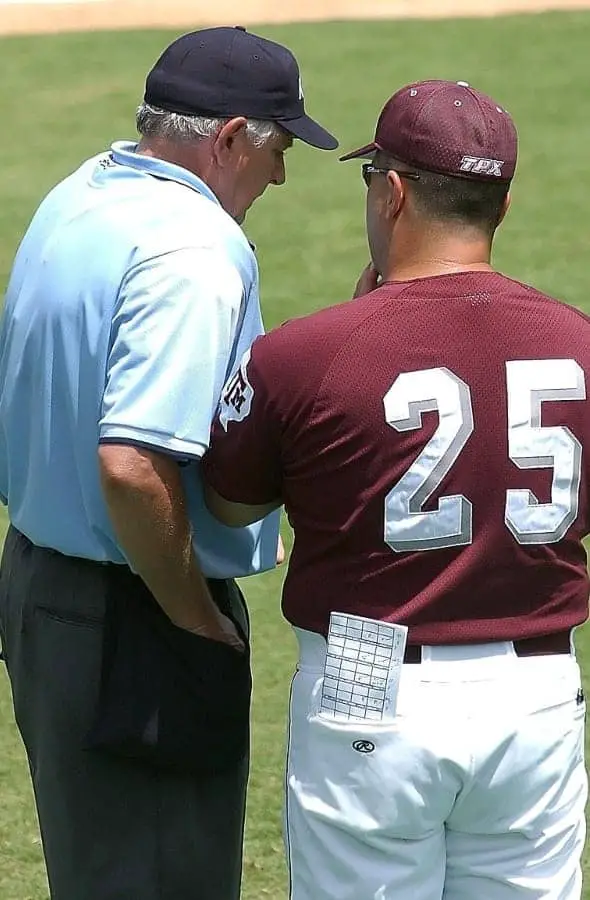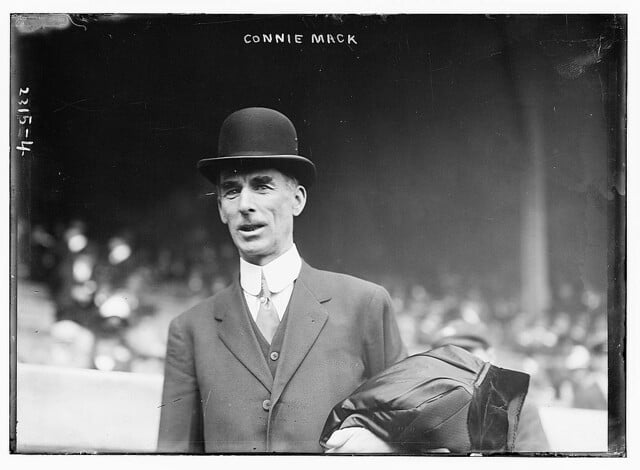Baseball – one of America’s most beloved pastimes. The crack of the bat, the roar of the crowd, the crunch of the peanuts in the stands… For millions of Americans, there’s simply nothing like it.
If you are a lover of major league sports, you may have noticed that while coaches in other sports tend to wear suits, sport coats or a simple branded shirt – baseball coaches (and managers) are quite unique. The sport’s most prolific managers from Leo Durocher to Joe Torre have all donned their team’s attire with very few exceptions. But why is this so?

Why Do Baseball Coaches Have Numbers? Baseball managers wear uniforms and have numbers because they always have! Managers have historically played an on-field role during the game, the game can sometimes get messy so formalwear is inappropriate and it helps managers build camaraderie amongst players.
The image of each sport is reflected in the attire and attitude of the manager and coaches. The heart of baseball is determination and grit – not the sort of impression left by a corporate-looking suit and tie. For an MLB coach or manager to wear the same uniform as the rest of the team just seems to make sense. But how exactly did this practice come to be?
What Are Uniform Numbers?
Every player, coach and manager in Major League Baseball is assigned their own number by the team they are contracted with at the time. This number can change when they move to a different team.
A player’s number is displayed at all times on their uniform, on their baseball card and any other place their name and team information would be shown.

Why Does Baseball Use Uniform Numbers?
The main reason for the creation of the numbers in the first place is so that players can more readily identify each other on the field. They are also useful for fans when collecting player stats and differentiating one player from another.
This significance is why jersey numbers are often retired after being worn by a very prolific athlete. Some of the most well-known examples in baseball history include Babe Ruth (#3), Lou Gehrig (#4) and Jackie Robinson (#42).
Previous renditions of player distinction in the late 1800s included different colored hats or jerseys to differentiate each player’s role on the field. These short-lived experiments proved to be unpopular and impractical – and have not been used since.
The use of uniform numbers in the major leagues was first tested in 1916 but did not become widely used until 1929.
That year, the New York Yankees and the Cleveland Indians both took the field with their newly minted uniform numbers, and all other major league teams eventually followed.
Players’ uniform numbers originally corresponded to the team’s batting lineup, but that practice changed shortly after teams started retiring numbers, making it impossible to continue to follow a sequential lineup order. For a few decades after that, some teams dabbled in assigning a range of numbers for each position, but that eventually fell out of vogue as well.
Today, the range of available numbers spans from 0 to 99, although most players have worn a number under 50. Players usually try to pick their favorite or lucky number and enlist a variety of superstitions or sentimental reasons to select their number.
High numbers are considered by many to be bad luck or meaning that a player isn’t good enough to “make it” in the major leagues.
This is because the higher numbers are generally assigned to new players during spring training and those just recently called up from the minor leagues who may or may not make the cut.
Eventually, as more and more numbers are retired, the higher numbers will become a more common sight. The decision to retire a number is usually left up to each individual team. However, there has been 1 exception: in 1997, on the 50th anniversary of Jackie Robinson’s first game, his number was retired across all MLB teams.
Sometimes a team will unofficially hold back a previously popular number even without going through the actual retirement process. A few managers have even had their numbers retired as well! Which brings us to the question – why do MLB managers and coaches even have a number?

Why Does The Coach Have A Number?
At first glance, the answer is simple. MLB managers and coaches have numbers because they wear uniforms just like the players do. But baseball is the only major league sport across the United States in which the coaches and managers all wear their own uniforms. Why is this so?
One reason for this distinction is that in baseball, coaches and managers actually play an on-field role during the game. In other sports, the coach is not usually allowed to enter the court or field of play.
Although not required by an official MLB rule, coaches and managers are expected to wear their own uniforms and numbers. The current rule only states that “All players on a team shall wear uniforms identical in color, trim and style, and all players’ uniforms shall include minimal six-inch numbers on their backs.” (source) Thus, it seems that the trend of baseball managers and coaches wearing their own uniforms is little more than a strongly-held tradition.
It is worth noting that not every manager has followed this tradition.
Connie Mack most famously bucked the trend by wearing a full suit while leading the Philadelphia Athletics to more than 3,500 wins during his record-breaking stint as manager in the early 1900s.

A Historical Explanation
The historical background of this tradition is that originally, team captains filled a unique role that later became known as “player/managers”. These captains (who were also players) were the ones who made pitching changes, player substitutions and other strategic decisions. The business manager was the one who made travel and other logistical arrangements for the team. This practice continued until well into the 1900s and was eventually replaced by today’s modern coaching and managerial system.
Related post: Should Coaches Pick Captains? Are They Worth The Trouble?
Today, the business manager position is handled by the general manager (most commonly referred to as the “GM”). The former captain or player/manager role has been replaced by a field manager (most commonly referred to as just “manager”) who does not typically play but takes a very hands-on role as the equivalent of a head coach position.
In addition, a team of coaches – in the role of assistant coaches – also help run the day to day operations of training and strategy. MLB teams today are allowed up to 7 uniformed coaches. Both the manager and the coaching staff wear uniforms with numbers, while the GM will typically be spotted wearing a suit and tie.

Additional Reasons
Other reasons the tradition has continued strong is because baseball is a messy sport played outdoors, it helps improve the level of camaraderie amongst the players, and shows that the manager and coaches are thought of as “part of the team”.
When compared to other major league sports, it becomes easy to see that the uniforms of those sports are more impractical for a non-player to wear. Imagine an NFL team’s coach donning full protective padding, or an NBA team’s manager lounging around in a tank jersey and shorts? It simply wouldn’t happen.
Summary: Why Do Baseball Coaches Have Numbers?
Because baseball is a sport steeped in tradition and history, don’t look for this unwritten rule to change anytime soon. In fact, these days a manager or coach would probably get teased if they showed up on the field wearing a suit and tie!
In so many ways, it just seems to fit that MLB coaches and managers would match the uniform and number system worn by the rest of the team. Although the trend originally started because managers were also players, even today they are still respected and seen by many as a part of the team.
Daniel

